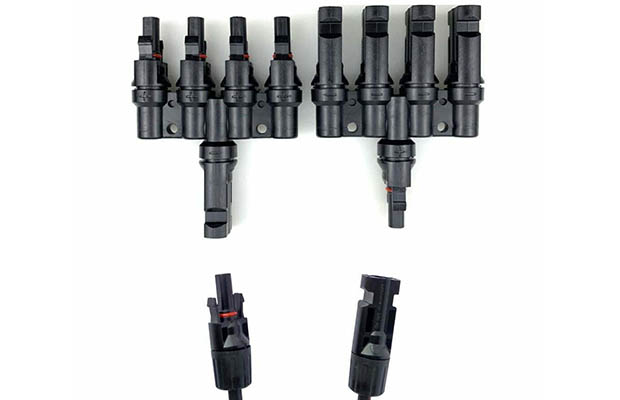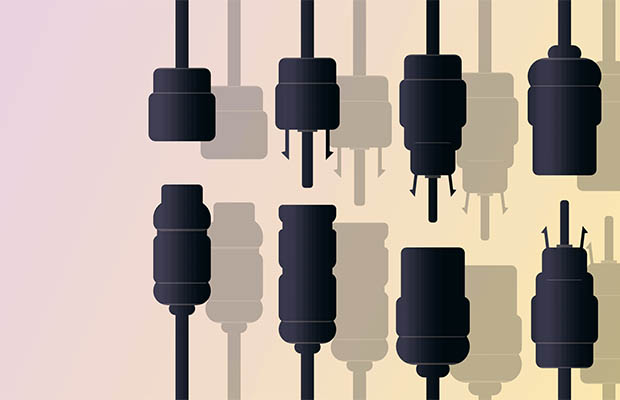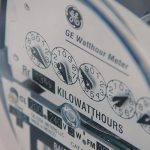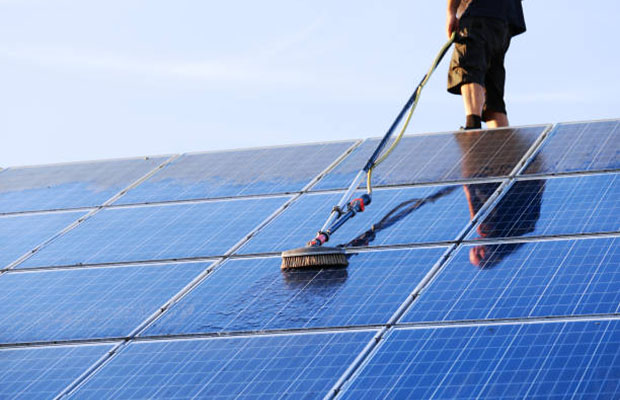Solar panel connectors are essential components in the installation of solar generation systems. By ensuring continuity between cables connecting the solar array’s modules, the connector expedites and facilitates installation.
The primary distinguishing characteristics of solar modules are various types of connectors or common non-connector junction boxes, both of which are used in the solar industry.
The MC4 (“multiple contact, 4 mm pin”) products is the variant that is most frequently used. The majority of solar panels connectors types in use today are MC4 parts and compatible models. The male and female pairs are manually snapped together for simple assembly.
The fundamentals of solar connectors will be covered in this article, along with a number of other crucial details you should be aware of. You will learn about the various types of solar connectors and how they differ from one another.
Read More: Triangular Solar Panels
Table of Contents
Different Types Of Solar Connectors
Today, a wide range of products are available, including:
- MC3 was the most popular solar panel connector in past years, being a really good and simple option manufactured by The multi-contact connector has a socket shell design for the female connectors and a 3 mm single-contact cylindrical plug for the male connectors.
- MC4 is one category manufactured by A single-contact cylindrical plug and socket shell measuring 4 mm is used in the multi-contact unit. MC3 is the 3 mm version of For the MC4 device to be protected from environmental hazards, the proper wires must be used. The wire is UV-shielded and double-insulated. Crimping or soldering creates a reliable link. Devices can support low-resistance contacts thanks to spring pressure. Under load, electrical arcing occurs when they are connected or disconnected.
- Helios H4 is manufactured by Amphenol as an MC4 compatible structure.
- SolarLok connectors produced by Tyco; were well-liked in the 2000s.
- Radox units rely on Copper and beryllium lamella contacts. These goods were produced by Huber + Suhner.
MC3 Vs. MC4 Connectors
The MC4 is a better and improved version of the MC3, the wire connector that Multi-Contact created before it.
The ingress protection (IP) rating is the primary distinction between the two connectors. The MC3 has an IP65 rating, which completely shields the cable from dust but only guarantees the protection of the wire against low-pressure water sources. On the other hand, the MC4 shields the wire from water immersion and dust particles, making it significantly safer in bad weather.
The locking system makes up the second and most significant difference. If the module is producing energy, the MC3 connector’s lack of protection against wire disconnections makes it possible to disconnect the cable quickly, which could result in an electric arc in the cable, which is a very dangerous occurrence. An MC4 assembly/disassembly tool is required to separate the MC4’s positive locking system.
It turns out that the MC4 connector is a much safer alternative, making it perfect for solar cables of virtually any length in solar generation systems. Simply cut the MC3 connector at the cable end and add the MC4 connector by crimping it to the wire with a crimping tool if you want to replace your old MC3 connectors with some MC4 connectors for each PV module at your house.

Operation Of Solar Panel Connectors Types
Wire leads with male or female end connectors are used in the construction of modern, scalable solar modules. They cannot unplug because of the locking mechanism.
Connector Wiring
The DC positive (+) and DC negative (-) wires from each solar module are used to connect MC4 elements in solar setups. Though this isn’t always the case, the positive lead typically has a male connector, and the negative is a female connector.
A series connection is made when two mechanisms are connected by coupling their positive and negative leads. Circuit voltage is raised in this manner. The maximum power current remains constant in a series circuit when it is wired.
Trimming
Sometimes MC4 units are split in half and plugged into both leads of the solar panel. In a typical installation, the connector must provide enough wire to reach the destination. The length of the cut must allow the cable to terminate in the combiner box in systems that use such a box. The connection is finished by removing the insulation from the cut ends and terminating them to bus bars or circuit breakers.
An MC4 disconnect tool is used if it becomes necessary to separate MC4 cables. To fit into the female MC4 structure, it has two extended posts at each end. The units can then disengage as a result of turning off the locking mechanism on the male connector. To disassemble the mechanisms, two tools are required.
Voltage Constant Wiring
If you want to connect more than two panels, you can use a PV combiner box or multi-branch components to connect the positive and negative terminals in a process known as parallel wiring. This maintains uniform voltage while improving the current at maximum power.
Similar to electrical extension cords, MC4 extension cables are available. They have male plugs on one end and female plugs on the other, just like these cords do. The energy is delivered to the electrical equipment via MC4 cables when two modules are connected in series.
Applications like RVs and boats employ two-module systems. The use of extension cables is not practical when installing solar panels on homes or cabins because longer wires are required. In these cases, a combiner box must be connected to the extension cables.
Are Solar Panel Connectors Standardized?
MC3, SolarLok, or other connector types were previously used by PV modules. With so many options, it was often difficult for homeowners to choose panels because they might become confused by the connector or might need to cut the installed connector in order to crimp their own at the cable with a crimping tool.
The lack of connectivity was an obvious indication that something needed to be done by the solar industry in order to standardize a solar connector for all of the various types of PV modules. Because they were more secure and had a high-quality design, the MC4 connector was ultimately established as the industry standard for connecting PV modules and other solar equipment.
No other collector has ever come close to matching the MC4’s excellent performance and high level of security. Since virtually all manufacturers use the MC4 connector, it is now believed that solar panel connectors are universal as a result of the MC4 connector’s popularity.
Ways To Connect Solar Connector Wires
The right parts and a basic understanding of the subject are required to connect or wire a solar installation for multiple PV modules properly. The first thing you must understand is that, for popular connectors like the MC4, the female connector represents the positive lead and the male, the negative.
The output voltage can be raised while maintaining the same power output by connecting PV modules in series. You must connect the positive lead of each panel to the negative of the following one in order to install a series of panels. The remaining positive and negative leads simply need to be connected to the inverter or solar charge controller, depending on your system, to complete the circuit.
The electrical current will rise when the solar panels are connected in parallel, but the output voltage will stay the same. Positive leads must be connected to each other for parallel installations, and vice versa for negative leads. An MC4 branch connector, which enables you to connect multiple leads together, must be used in order to accomplish this. A 2-way MC4 branch connector, a 3-way MC4 branch connector, and so forth can be used to install two, three, or more branches.
The series-parallel connection combines parallel and series solar panel installations, increasing the output of voltage and electrical current. You must install equal strings of panels in this instance in series before installing them in parallel with the other branches.
When Combining Connectors, Use Caution
The number of different connectors available on the market will be astronomical if we include all generic types. Although they are made by different manufacturers and have different looks, the end user rarely cares. What counts are adherence to specifications, compatibility with other types, and whether these mixed connections satisfy all necessary requirements.
Solar connectors that adhere to all applicable regulations are present in almost every solar panel sold today. If you’re purchasing used modules, however, find out what kind of connectors the panels have. For instance, MC3 connectors appear to be fairly dependable and are weatherproof, but they are not NEC compliant due to the lack of a positive locking mechanism. As a result, most states prohibit their use for attaching solar panels.
The blending of different connector types is a further crucial subject. Because most generics can be intermixed with MC4 connectors, compatibility is rarely a problem. The issue is that many of these connections don’t follow all applicable regulations. Nevertheless, some do, like the T4 connector produced by Canadian Solar. A document confirming the acceptance of T4 and MC4 connections was made public by the company. In all other situations, you have a choice between replacing the connectors or contacting the manufacturer to get a warranty addendum.
Conclusion
While you can purchase any kind of solar connector when installing solar panels, it’s crucial to consider the connector’s impedance, IP index, and safety locking mechanisms.
The best option for any solar installation, including combined or hybrid installations when you power a home with solar panels and wind turbines, the MC4 connector has exceptional specifications in these categories and more.





